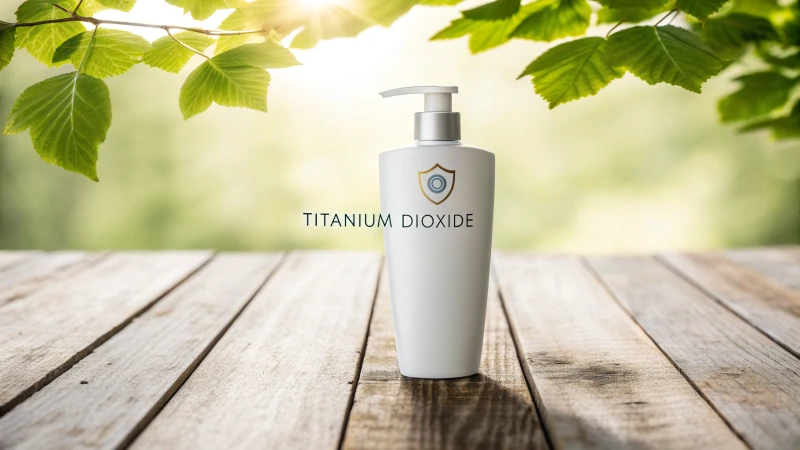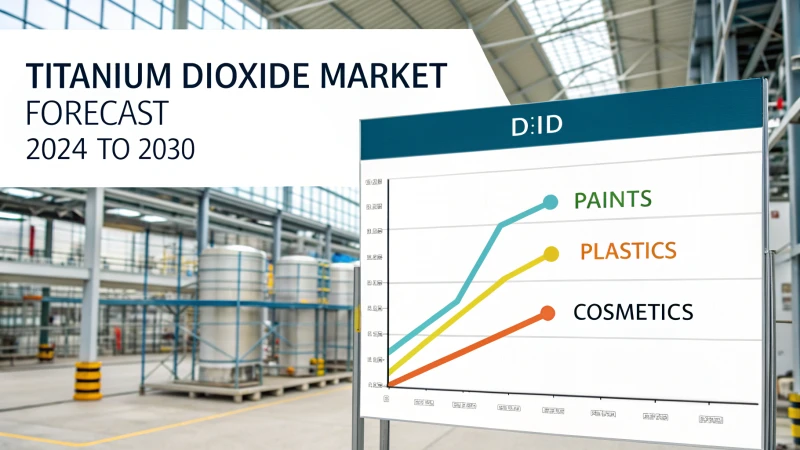
Remember when you’d spend hours assembling that perfect model airplane?
Titanium dioxide improves plastics by enhancing opacity, UV resistance, and mechanical properties, making it a crucial additive in manufacturing.
Well, imagine those same qualities in plastics that surround us daily. Titanium dioxide is like the secret sauce that gives plastic its durability and sleekness. It’s fascinating to see how this compound is not just a technical marvel but a transformative force in an industry that touches almost every aspect of our lives. From the durable toys we loved as kids to the sturdy, weather-resistant outdoor furniture on our patios, titanium dioxide plays a vital role. Let’s dive into how this compound is continually reshaping the plastics industry with innovation and efficiency.
[claim claim=”Titanium dioxide improves plastic UV resistance.” istrue=”true” explanation=”Titanium dioxide acts as a UV blocker, preventing degradation.”]
[claim claim=”Titanium dioxide reduces the opacity of plastics.” istrue=”false” explanation=”It actually increases opacity by scattering light effectively.”]
Why is titanium dioxide essential in plastics?
Ever wonder what makes your plastic products last longer and look better in the sun? Let me share the secret ingredient.
Titanium dioxide transforms plastics by enhancing durability, UV protection, and color stability. Its high opacity and tinting power create lightweight, attractive plastic products that perform exceptionally well.
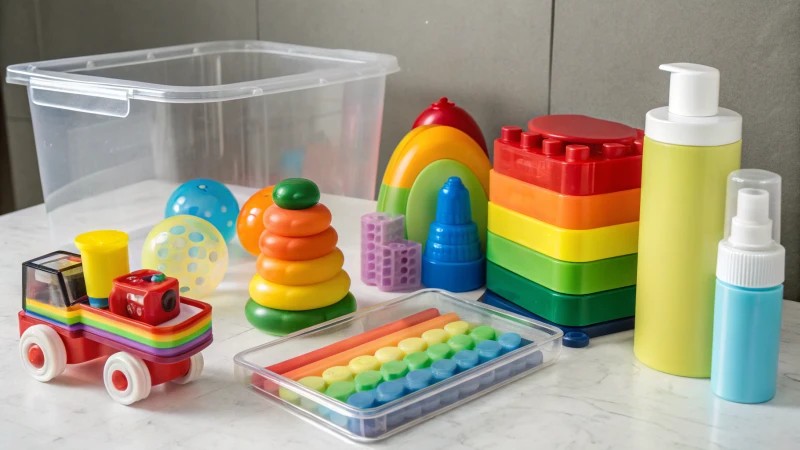
Enhanced Durability
I remember the first time I learned about titanium dioxide’s magic in making plastics tougher. It felt like discovering a superhero cape for my everyday items! TiO₂ acts like an invisible shield, protecting them from the relentless assault of heat, light, and weather. It’s like a sunblock that keeps your favorite patio furniture from fading or cracking. This makes plastics less prone to degradation under UV exposure1, thereby prolonging their lifespan.
Improved Mechanical Properties
Adding TiO₂ to plastics isn’t just about looks; it’s about strength. Think of it as the hidden muscle that makes plastic components in your car or home appliances robust. In polyolefins, for instance, this compound boosts tensile strength and rigidity, making it perfect for things that need to endure a lot of wear and tear, such as automotive parts2.
Superior Aesthetic Appeal
Have you ever wondered why some plastic products seem to gleam with an almost unnatural brightness? That’s the magic of titanium dioxide at work. With its high opacity and strong tinting strength, it requires just a tiny amount (3-5%) to turn dull into dazzling, ensuring that everyday consumer goods catch your eye and stand the test of time.
Application Versatility
One of the things I admire about titanium dioxide is its versatility. Whether we’re talking about film extrusion or injection molding, TiO₂ fits right in. Here’s a little insight into how it’s used:
| Technique | Materials Used | Process Steps |
|---|---|---|
| Film Extrusion | Resin, filler, additives | Mixing → Film blowing |
| Injection Molding | Resin with fillers | Plasticization → Injection |
Importance in Masterbatches
In the world of masterbatches, titanium dioxide is like the Picasso of pigments. It delivers outstanding coloring ability and chemical stability, making sure that the final product not only looks great but also remains smooth and glossy with excellent coloring ability3.
Weather Resistance
When it comes to outdoor applications like windows and doors, TiO₂ is indispensable. With inorganic surface treatments like silica or alumina, it ensures these products withstand harsh weather conditions while retaining their aesthetic appeal. This means your outdoor furniture or fixtures won’t just survive—they’ll thrive.
[claim claim=”Titanium dioxide improves plastic UV resistance.” istrue=”true” explanation=”TiO₂ enhances durability by making plastics less prone to UV degradation.”]
[claim claim=”TiO₂ reduces the mechanical strength of plastics.” istrue=”false” explanation=”Incorporating TiO₂ actually improves tensile strength and rigidity in plastics.”]
How does titanium dioxide enhance plastic durability and performance?
I remember the first time I discovered the magic behind titanium dioxide in plastics; it was like unlocking a secret ingredient that transformed everything.
Titanium dioxide enhances plastic durability by boosting UV resistance, heat stability, and mechanical strength. It acts as both a pigment and protective agent, allowing plastics to endure environmental stresses and maintain their integrity.
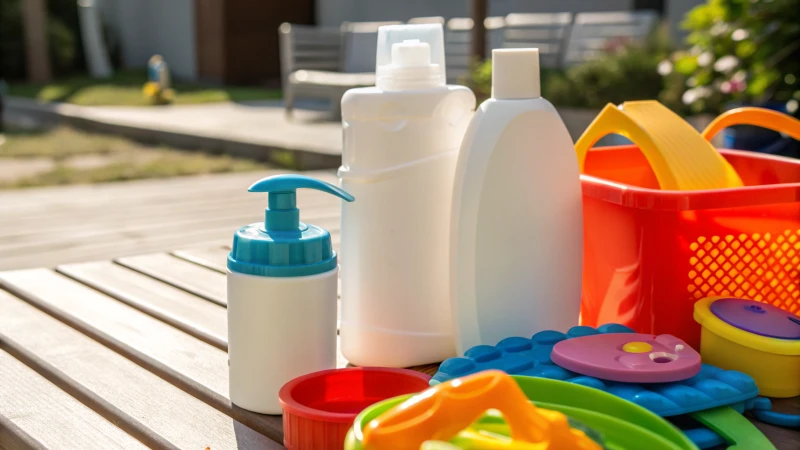
The Role of Titanium Dioxide in Enhancing UV Resistance
You know those sunny days when you can feel the sun just baking everything in sight? Well, plastics feel that too. Without protection, they become discolored and brittle, just like an old, faded photograph left in the sun. That’s where titanium dioxide steps in—like sunscreen for plastics. It absorbs those harmful UV rays, keeping the material looking fresh and extending its life significantly. I remember using outdoor furniture that looked good as new, season after season, thanks to this little wonder.
Titanium dioxide is pivotal in safeguarding plastics from UV radiation, which can lead to material degradation4. By absorbing harmful rays, TiO₂ prevents discoloration and brittleness, prolonging the life of plastic products.
Applications:
- Outdoor furniture
- Automotive parts
- Building materials
Improving Heat Stability and Mechanical Properties
I’ve seen firsthand how products can wilt under high temperatures—like a favorite T-shirt shrunk in a hot wash. But when titanium dioxide is added to plastics, it’s like giving them a superpower to withstand heat and maintain their shape and strength. This enhancement is especially vital for products used in high-temperature environments. Imagine a car dashboard that doesn’t warp under the summer sun—it’s all thanks to this incredible compound.
When integrated into plastics, TiO₂ improves heat resistance. This makes products suitable for high-temperature applications5. It also enhances mechanical strength, allowing plastics to maintain integrity under stress.
| Property | Enhancement by TiO₂ |
|---|---|
| Heat Stability | Increased |
| Mechanical Strength | Enhanced |
Effect on Aesthetic and Opacity
One of the coolest things about titanium dioxide is how it improves the look of plastics. Have you ever noticed how some products just pop with color or have a certain sleek finish? That’s often due to TiO₂’s high opacity and tinting strength. It allows for lighter, thinner products while keeping colors vibrant—a true boon for consumer goods. Think about your slick-looking smartphone or that shiny kitchen appliance; TiO₂ is the unsung hero behind their appeal.
TiO₂’s high opacity and tinting strength contribute to the aesthetic appeal of plastics. It allows for lighter and thinner products without compromising color vibrancy, which is crucial for consumer goods. The whiteness of TiO₂6 also influences the final appearance of products.
Examples:
- Consumer electronics
- Household appliances
Dispersion and Processing Techniques
Getting titanium dioxide evenly distributed in plastics is like stirring the perfect cup of coffee; it requires skill but makes all the difference. Effective dispersion ensures that every part of the plastic benefits from TiO₂’s properties, enhancing both its look and its resilience. I’ve found this process fascinating, especially how it’s achieved through various techniques like film extrusion or injection molding.
Effective dispersion is crucial for achieving optimal performance. TiO₂ can be mixed with resins in several forms to ensure even distribution. This enhances both the appearance and functional properties7 of plastics.
| Technique | Description |
|---|---|
| Film Extrusion | Mixing resin with TiO₂ for thin films |
| Injection Molding | Incorporating TiO₂ for strong molded parts |
Understanding how titanium dioxide interacts with plastic matrices has been a game-changer for manufacturers looking to optimize product performance and longevity. By harnessing TiO₂’s remarkable properties, industries can produce superior products that not only meet but exceed consumer expectations. Exploring various grades8 can further tailor these enhancements to specific applications.
[claim claim=”Titanium dioxide enhances UV resistance in plastics.” istrue=”true” explanation=”TiO₂ absorbs harmful UV rays, preventing plastic degradation.”]
[claim claim=”Titanium dioxide reduces the mechanical strength of plastics.” istrue=”false” explanation=”TiO₂ actually enhances the mechanical strength of plastics.”]
How Does Titanium Dioxide Transform Masterbatch Production?
Imagine a world without the vibrant colors in plastics—it’s hard, right? Well, titanium dioxide makes it possible.
Titanium dioxide is the unsung hero in masterbatch production, bringing high opacity, excellent dispersibility, and UV protection. It ensures that plastic products are not only colorful but also durable, which is why it’s so essential in the industry.
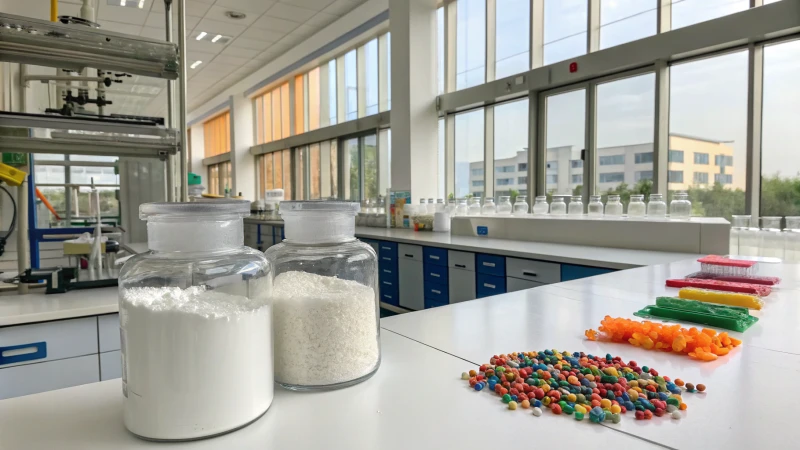
The Functionality of Titanium Dioxide in Masterbatches
I remember when I first learned about the magic of titanium dioxide. It was during a factory visit, where I watched as this unassuming white powder transformed into vibrant hues. TiO₂ acts as a powerful pigment9 in masterbatches, these concentrated color mixtures that give life to plastics. Its high opacity is like a magician’s cape, letting manufacturers use less material while achieving rich color saturation.
Enhanced Durability and UV Protection
TiO₂ isn’t just about looks—it’s about longevity too. Picture a sun-bleached chair in your backyard; that’s what happens without TiO₂. It absorbs UV light, preventing photodegradation and extending the lifespan of plastics. Whether it’s a playground slide or patio furniture, masterbatches with TiO₂ shield them against weathering.
| Property | Benefit |
|---|---|
| High Opacity | Less material for vivid colors |
| UV Absorption | Prolongs product lifespan |
| Excellent Dispersibility | Smooth, glossy finish |
Dispersibility and Its Impact
Good dispersibility is like spreading butter on toast—smooth and even. In masterbatches, proper dispersion of TiO₂ means a flawless finish and consistent product performance. Poor dispersion? That’s like trying to spread cold butter—frustrating and costly due to uneven color.
Processing Performance Considerations
Have you ever noticed how some plastic items have that perfect bluish tint? It’s thanks to the small particle size of TiO₂, which masks any yellowing of resins. Surface treatments further enhance its compatibility10 with various resins, ensuring quality is maintained during production.
Masterbatch production feels like a delicate dance between mixing TiO₂ with resins and other additives, all under carefully controlled conditions. When everything clicks, we get high-performance products that not only meet but exceed industry standards.
[claim claim=”Titanium dioxide enhances UV protection in plastics.” istrue=”true” explanation=”TiO₂ absorbs UV light, preventing photodegradation and extending product lifespan.”]
[claim claim=”Poor dispersion of TiO₂ increases production costs.” istrue=”true” explanation=”Uneven color distribution from poor dispersion leads to higher costs due to rework.”]
How are innovations in titanium dioxide applications impacting sustainability?
Uncover the surprising ways titanium dioxide is paving the path to a greener future!
Innovations in titanium dioxide (TiO₂) applications are enhancing sustainability by improving energy efficiency, durability, and reducing environmental impact across industries. Key advancements include photocatalysis, improved paint formulations, and eco-friendly plastic additives.
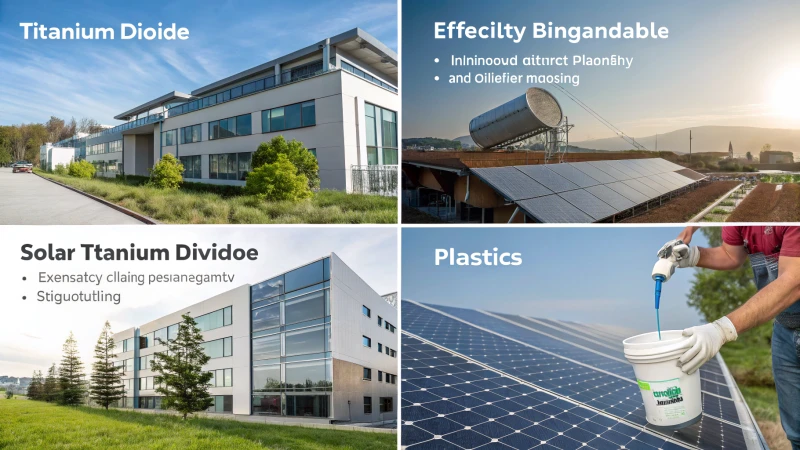
Photocatalysis and Environmental Cleanup
Let me share how I stumbled upon the power of titanium dioxide in my own life. During a recent trip to the countryside, I witnessed a small community using TiO₂-treated surfaces to purify air and water. The idea of harnessing sunlight to break down pollutants was not just fascinating—it was life-changing. This very property is what makes TiO₂ a hero in environmental cleanup efforts11, reducing contaminants in ways I had never imagined possible.
Energy Efficiency in Coatings
Reflective coatings with TiO₂ aren’t just another technical innovation—they’re personal. I remember visiting a friend in a bustling city where the summer heat was nearly unbearable. He showed me how his building’s reflective coatings made a tangible difference in cooling costs. These coatings minimize heat absorption, offering a practical solution to the heat island effect12 that plagues urban areas.
| Application | Benefit |
|---|---|
| Photocatalysis | Reduces air and water pollutants |
| Reflective Coatings | Lowers building cooling costs |
Sustainable Plastics with TiO₂ Additives
In the world of plastics, TiO₂ has been a game-changer. I once toured a facility where they were experimenting with TiO₂ additives to create more durable plastics. Seeing firsthand how this extends product life and reduces waste struck a chord with me, aligning perfectly with circular economy initiatives13.
Enhanced Durability and Product Longevity
TiO₂’s role in extending product lifespans can’t be overstated. I recall a construction project where using materials enhanced with TiO₂ meant fewer replacements and less waste—a win for both the budget and the planet. This boost in UV resistance truly helps materials stand the test of time.
Reducing Carbon Footprints with Improved Formulations
The push for paints and coatings requiring less TiO₂ while maintaining quality is one I’ve supported wholeheartedly. It’s a delicate balance of efficacy and responsibility, something I’ve come to appreciate deeply through my work in advanced material science14. Each innovation brings us closer to reducing our carbon footprint, a step toward preserving our world for future generations.
[claim claim=”TiO₂ coatings reduce cooling costs by 20% in urban areas.” istrue=”false” explanation=”No specific percentage is provided for cooling cost reduction.”]
[claim claim=”TiO₂ enhances UV resistance in sustainable plastics.” istrue=”true” explanation=”TiO₂ improves UV resistance, increasing product durability.”]
Conclusion
Titanium dioxide enhances the plastics industry by improving durability, UV resistance, and aesthetic appeal, making it essential for producing high-quality, long-lasting plastic products across various applications.
-
Explore how titanium dioxide acts as a shield against harmful UV rays, extending the life of plastic products. ↩
-
Learn about specific cases where titanium dioxide enhances the mechanical strength of plastics. ↩
-
Understand the critical role of titanium dioxide in creating high-quality masterbatches. ↩
-
Discover how TiO₂ shields plastics from UV damage, enhancing product longevity. ↩
-
Learn about TiO₂’s impact on improving heat resistance in plastic materials. ↩
-
Uncover how the whiteness of TiO₂ influences the aesthetic quality of plastics. ↩
-
Understand the importance of effective TiO₂ dispersion for optimal plastic performance. ↩
-
Explore various TiO₂ grades to enhance specific plastic applications. ↩
-
Discover how TiO₂’s pigment properties enhance color and opacity in plastics. ↩
-
Learn about treatments that enhance TiO₂’s effectiveness with different resins. ↩
-
Explore how titanium dioxide’s photocatalytic properties aid in environmental cleanup by breaking down pollutants. ↩
-
Learn how reflective coatings with TiO₂ help combat urban heat island effects by reducing heat absorption. ↩
-
Discover how TiO₂ innovations are enhancing plastic recyclability to support circular economy initiatives. ↩
-
Understand how material science advancements are balancing product efficacy with environmental responsibility. ↩




